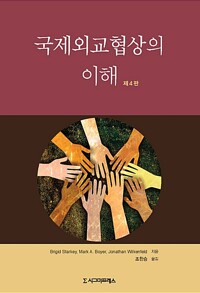
단행본
Diplomacy: communication and the origins of international order
- 개인저자
- Robert F. Trager
- 발행사항
- Cambridge, United Kingdom; New York, NY: Cambridge University Press, 2017
- 형태사항
- 283 p. ; 23 cm
- ISBN
- 9781107627123
- 청구기호
- 349 T765d
- 서지주기
- Includes bibliographical references and index
소장정보
| 위치 | 등록번호 | 청구기호 / 출력 | 상태 | 반납예정일 |
|---|---|---|---|---|
이용 가능 (1) | ||||
| 1자료실 | 00017587 | 대출가능 | - | |
이용 가능 (1)
- 등록번호
- 00017587
- 상태/반납예정일
- 대출가능
- -
- 위치/청구기호(출력)
- 1자료실
책 소개
How do adversaries communicate? How do diplomatic encounters shape international orders and determine whether states go to war? Diplomacy, from alliance politics to nuclear brinkmanship, almost always operates through a few forms of signaling: choosing the scope of demands on another state, risking a breach in relations, encouraging a protege, staking one's reputation, or making a diplomatic approach all convey specific sorts of information. Through rich history and analyses of diplomatic network data from the Confidential Print of the British Empire, Trager demonstrates the lasting effects that diplomatic encounters have on international affairs. The Concert of Europe, the perceptions of existential threat that formed before the World Wars, the reduction in Cold War tensions known as detente, and the institutional structure of the current world order were all products of inferences about intentions drawn from the statements of individuals represented as the will of states. Diplomacy explains how closed-door conversations create stable orders and violent wars.
This book explores questions such as: How do adversaries communicate? How do diplomatic encounters shape international orders and determine whether states go to war?
This book explores questions such as: How do adversaries communicate? How do diplomatic encounters shape international orders and determine whether states go to war?
목차
1. Can adversaries communicate?; 2. How perceptions of intentions form; Part I. Theory: 3. The scope of demands; 4. Risking a breach; 5. Balancing allies and adversaries; 6. Diplomatic approaches; Part II. Empirical Analysis: 7. The fruit of 1912 diplomacy; 8. How Germany weighed British resolve in 1938?9; 9. Statistical analysis of diplomatic communication; 10. Creating international orders; Appendices: A. Proofs for chapters 3-6; B. Inference data set; C. Threats, offers, and assurance dataset; D. German inferences prior to World War II.




